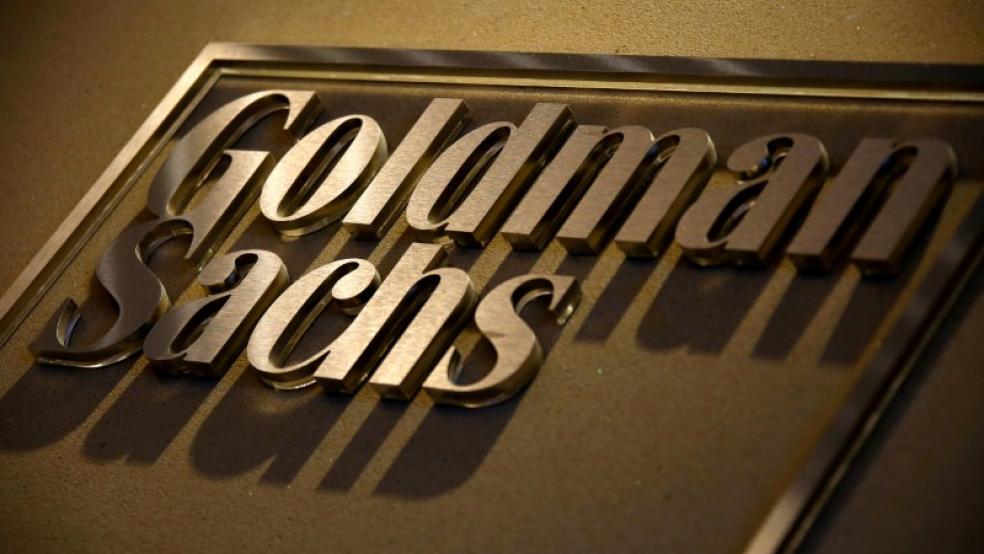People are rightly concerned that numerous former Goldman Sachs executives have taken plum positions in the upper echelons of the Trump administration, making a mockery of the president’s populist campaign rhetoric. But we all know that Goldman’s friendly merger with government spans both political parties over a period of decades. In fact, the latest outrage involving Goldman dates back to the Obama administration.
Last April, as part of its “settlements for everybody” approach to the housing bubble-era financial crime wave, Obama’s Justice Department reached agreement with Goldman Sachs to end investigation into the fraudulent sale of mortgage-backed securities. The bank lied to investors about the quality of the loans that comprised these securities, earning billions off the deception.
Related: How Democrats Can Un-Rig the Party and Start Winning Again
The Justice Department billed this as a “$5.1 billion settlement.” But that figure was incredibly misleading; at best the bank was giving DoJ a small cut of a decade of profits. There was a bigger problem, too: $1.8 billion of this settlement was earmarked for “consumer relief,” in which Goldman would write down the mortgages of struggling homeowners. But it didn’t own any home loans.
So Goldman went on a mortgage-buying spree, becoming the dominant customer for delinquent home loans from Fannie Mae, the government-sponsored mortgage holder. The bank has sucked up two-thirds of the $9.6 billion in loans Fannie Mae sold in the past year and a half, including $1.4 billion just last week. It has also purchased loans from other sellers, under the alias MTGLQ Investors (short for “mortgage liquidation”). And in no case was Goldman paying full price. In fact, it’s paid as low as 50 percent of the face value for the “non-performing” loans.
Doing the math reveals the ridiculousness of the Justice Department calling this a punishment. Goldman Sachs buys a home loan at 50 percent off. It then modifies the mortgage for the borrower to perhaps 60 percent of face value. The modification gets referred to the overseer of the mortgage settlement, proving that Goldman did lower the cost for the homeowner. And as homeowners begin to make modified payments, the bank can resell the now-performing loans, or just take in the revenue stream. If this works, Goldman makes at least a 10 percent profit on the deal, while satisfying the consumer relief terms of the settlement.
In other words, the government sentenced Goldman Sachs to make money.
Related: JPMorgan Case a Reminder Why Trump’s Attack on Dodd-Frank Is Dangerous
Not only that, but if you think about who ends up paying the cost of the relief for the homeowner, it’s Fannie Mae, who sold the delinquent loans at a severe discount, with some of that going to the homeowner and a markup to Goldman Sachs. Under the current conservatorship, Fannie Mae remits all of its profits to the U.S. Treasury. So these losses are essentially borne on the backs of the government. If you’re asking who paid Goldman Sachs’ mortgage penalty, the answer is Uncle Sam.
This is already working well for Goldman. In February, Eric Green, the settlement monitor, announced that the bank has satisfied over $100 million of its penalty already, through various modifications on around 5,000 mortgages.
I’ll stress that there’s nothing illegal going on. Goldman was told to deliver consumer relief and it’s doing it. The homeowners in these distressed mortgages are getting help. And if Goldman can achieve that while making money for its investors, bully for it. But this was supposed to be a penalty for committing fraud, not a business opportunity. And there’s no reason it couldn’t have been structured to force the actual offending bank to take the losses.
What if, instead of Goldman Sachs administering consumer relief, it paid the $5 billion into a homeowner fund, which the government — through Fannie Mae or other agencies — then used to compensate troubled borrowers? This would have generated the exact same outcomes for homeowners, at Goldman’s expense.
Policymakers have been screaming for precisely this kind of compensation fund since the foreclosure crisis began nearly a decade ago. During the Great Depression, a government program called the Home Owner’s Loan Corporation (HOLC) bought up a million distressed mortgages, modified the loans to keep people in their homes, and by the time it ended in the early 1950s, turned a small profit.
HOLC was a solid initiative that would have helped far more people than the government’s failed attempts at foreclosure mitigation. We didn’t need to leave this idea to proven rip-off artists running the same program as penance for misdeeds.
Additionally, when Goldman operates an HOLC-style scheme, the main interest is profits, not the public. The Wall Street Journal reports that the bank has often foreclosed on these mortgages, taking advantage of higher home prices to make money on the resale. In fact, if Goldman forgives secondary loans on the same property, it can foreclose and earn credit toward the settlement at the same time. Goldman’s bankers are obviously weighing which strategy will bring a higher return on a case-by-case basis. The interests of the actual homeowners living in these properties are of secondary concern.
Related: 10 Real Estate Trends to Watch in 2017
This nonsensical circumstance stems from an inability to hold any company or individual accountable for the mortgage disaster that triggered the Great Recession. The Obama administration stressed that speeding relief to needy families took precedence over a need for Biblical-style justice. But of course, there’s nothing speedy about a loan modification in 2017, a decade after the bubble collapsed. And if nobody at Goldman will pay a price anyway, the least Obama could have done is to take control of the process, minimizing collateral damage and ensuring that Goldman didn’t reward itself even more from the swindle.
The failure of accountability was a component in the rise of Trump, whose anti-establishment rhetoric masked a return to power for the same old Wall Street titans. Trump railed against Goldman Sachs and then put its executives in control. But Obama’s Justice Department “punished” Goldman Sachs by allowing it to profit off the same mortgage crisis it helped create. The more things change, the more they stay the same.






